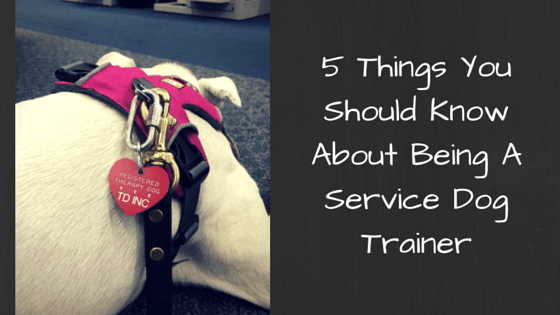
Helping someone train his/her own service dog or training service dogs for their handlers is a time-consuming commitment, but one that is extremely rewarding. This is a time for a trainer to be able to be involved long-term with a dog/handler team with specific goals in mind. Working with service dogs and service dogs in training requires a somewhat unique skill set and body of knowledge. Being a prepared service dog trainer is important.
1. Americans with Disabilities Act (ADA)
Know and understand the Americans with Disabilities Act (ADA). This is the only thing overseeing service dogs at the federal level. Also, know any legislation your particular state may have regarding service dogs and emotional support animals.
2. Document, Document, Document!
Document everything you do. This serves many purposes over time – it can help you troubleshoot, it can help you formulate training plans, it shows the work you have done to ensure a safe, well-trained, appropriate service dog, etc.
3. Be True To Yourself
Know your limits and experience. For example, if you have no experience training an alert dog, refer your client to someone who does. Then ask if you might be able to observe and learn about the training.
4. Research
Do your research. There are no particular certifications or registrations required for service dogs and emotional support animals. Know the difference between service dogs, emotional support animals, and therapy animals. Incorporate evaluations like the Canine Good Citizen and Canine Life and Social Skills evaluations into your clients’ training plans.
5. Public Access
Public Access Training is a vital part of service dog training. Having a service dog or service dog in training in the public eye is under a great deal of scrutiny and observation. Ensure the teams you work with understand this and are committed to excellence in public access. Utilize a public access test to evaluate teams. Look online for test examples such as the Assistance Dogs International Public Access Test.
Your best resource when working with service dogs and service dogs in training is the handler — the person the dog is working for! They are going to be the one living with, and benefiting from, their service dog; talk to them about their ideas for how this is all going to work to work together to a mutually beneficial end result of an awesome, well-trained service dog.
Get Dog Training Business Tips!
Receive valuable dog training business tips and resources every week! Subscribe to The Modern Dog Trainer now by submitting your name and email below.
[mc4wp_form]



